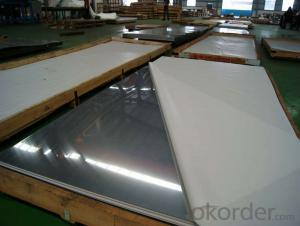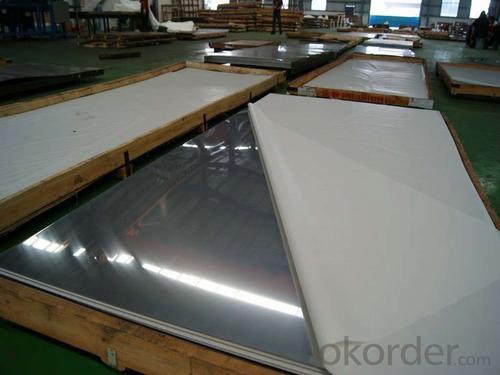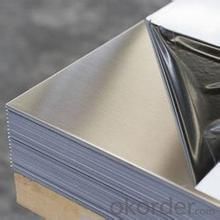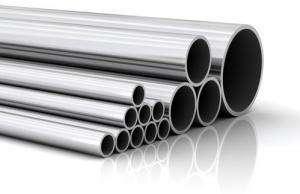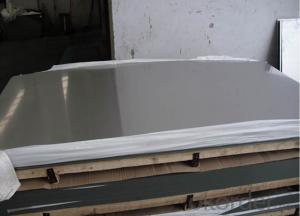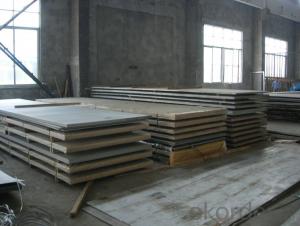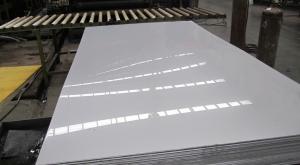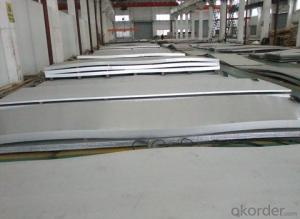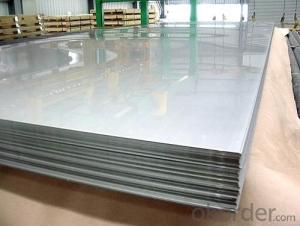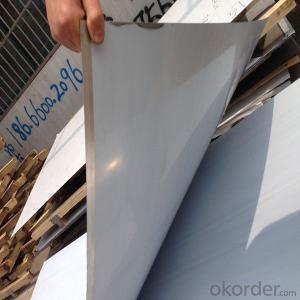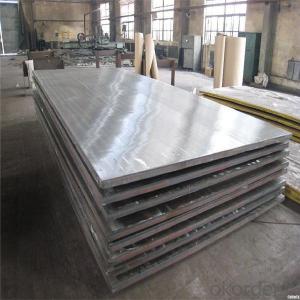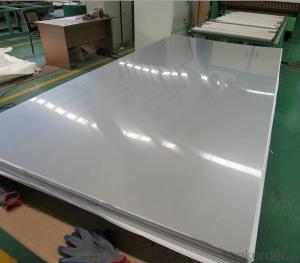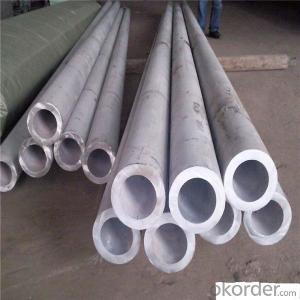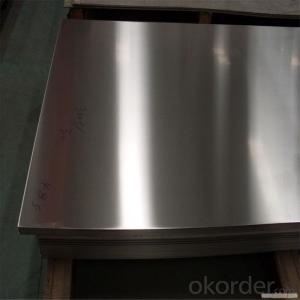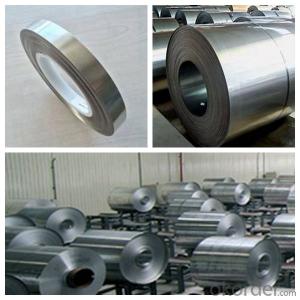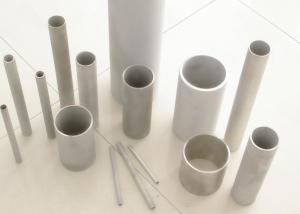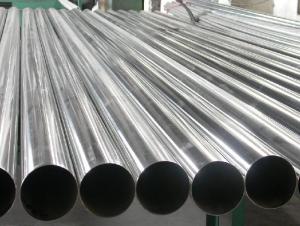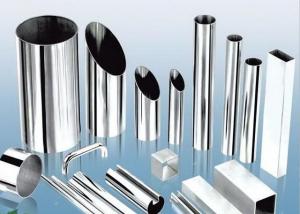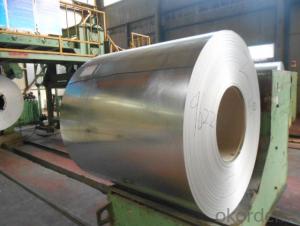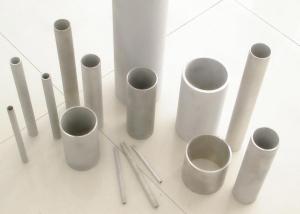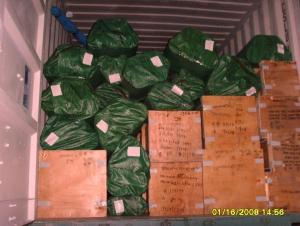304 Stainless Steel Plate in Wuxi, China
- Loading Port:
- Shanghai
- Payment Terms:
- TT OR LC
- Min Order Qty:
- 4.5
- Supply Capability:
- 3000 m.t/month
OKorder Service Pledge
OKorder Financial Service
You Might Also Like
Specification
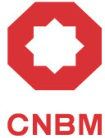 CNBM International Corporation
CNBM International Corporation
Stainless steel
CNBM began to domestic trade since 70S,now we also sell stainless steel aborad.
We are the agent of TISCO,BAOSTEEL,LISCO,JISCO,ZPSS.
Our main products are stainless steel inox sheet/plate,coil/roll,strip,bar,angle,pipe and tube.
Grade-- 201,202,304,304L,316,316L,310S,309S,301,321,904L,410,420,430,409.
Surface--2B,BA,No.4/HL/Hairline/brushed/satin,8K/No.8/mirror,SB,gold,etch,No.1,polish.
Thickness--0.2-6mm for cold rolled; 3-150mm for hot rolled.
Width:10mm-2000mm for coil.
Standard size --1000×2000mm,1219×2438mm=4ft×8ft=1220×2440mm,
1250×2500mm,1500×3000/6000mm,1524×6096mm.For sheets/plates.
Certificate--ISO,BV,SGS,TUV,IQI or other third inspections.
Package--wooden pallets with fimugated,iron pallets,water proof papers,
interleaved paper,pvc film,20'GP or 40'GP container.
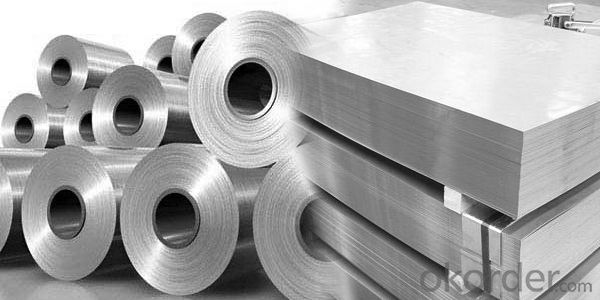
Product Description
Description of 304 1mm thick stainless steel sheet prices
1 | Product Name | 304 1mm thick stainless steel sheet prices |
2 | Material | ASTM 301, ASTM304,ASTM304L, ASTM 316, ASTM316Ti,ASTM309S, ASTM310S, ASTM321, ASTM347H,ASTM A317,ASTMA317L, ASTM409,ASTM409L,ASTM410,ASTM420,ASTM430 ASTM 201,ASTM202, |
3 | Technique | Cold Rolled Stainless Steel plate Cold Drawn Stainless Steel plate Hot Rolled Stainless Steel plate |
4 | Standard | ASTM,AISI,ASME,JIS,SUS,DIN,EN,GB,BS |
5 | Thickness | 0.2-6.0mm for cold rolled 3.0-300mm for hot rolled |
Width | 600-3000mm | |
Length | Any, as your requirement | |
6 | Surface Treatment | No.1, NO.4 ,2B, BA, Hair Line,8K,Brush,Embossed and Mirror Finish or as your demand |
7 | Packing | Standard export packing-For stainless steel sheet 1.surface polish 2. bundle package 3. wooden case , wooden pallet package 4:container or bulk 5. special according to customer request |
8 | Delivery | Normally according to the order quantity or upon negotiation |
9 | Price Item | FOB,CFR,CIF Or as negotiated |
10
| Application | Stainless Steel plate are widely used in below fields: 1: Construction feild,shipping building industry 2: Petroleum and Chemical Industries 3: Food and Machenical Industries 4: Boiler Heat Exchange 5: Machinery and Hardware Industries |
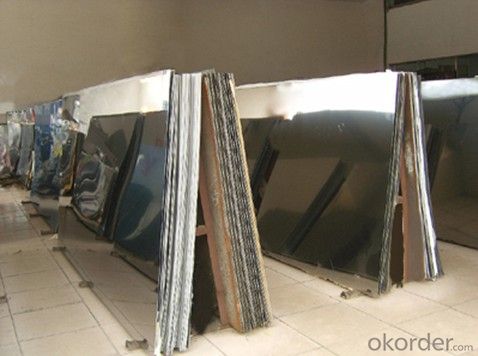
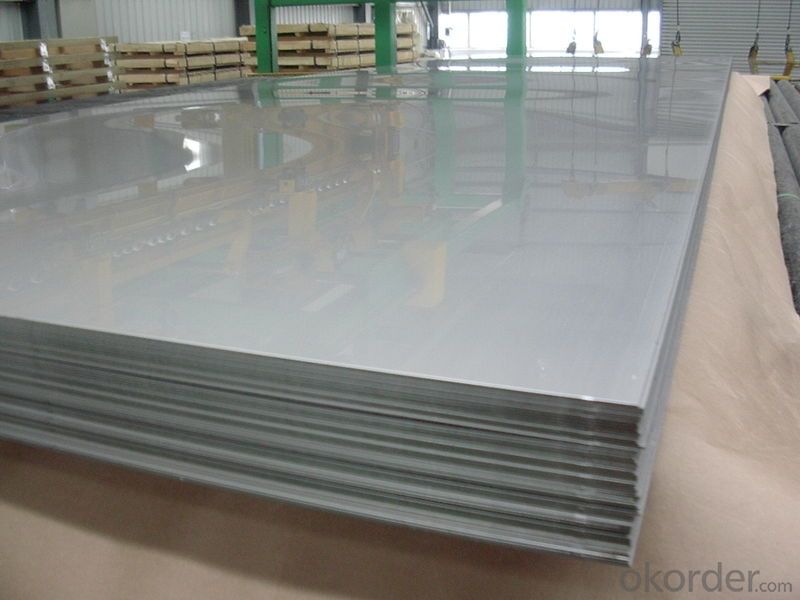
Mechanical property of 304 1mm thick stainless steel sheet prices
| Tensile Strength | σb (MPa)≥520 |
| Offset Yield Strength | σ0.2 (MPa)≥205 |
| Elongation | δ5 (%)≥40 |
| Hardness | ≤187HB;≤90HRB;≤200HV |
| Density(20℃,g/cm3) | 7.98 |
Chemical composition of 304 1mm thick stainless steel sheet prices
| 316 | C | Si | Mn | P | S | Ni | Cr | Mo |
| % | ≤0.08 | ≤1 | ≤2 | ≤0.035 | ≤0.030 | 10.0~14.0 | 16.0~18.5 | 2.00-3.00 |
Maintenance of 304 1mm thick stainless steel sheet prices
Regular cleaning and maintenance
Pay attention to prevent the occurrence of the phenomenon of surface scratches
Use soap, weak detergent or warm water to remove surface dust, dirt
In addition to the surface of the binder with alcohol or an organic solvent (ether, benzene)
Use neutral detergent or ammonia solution in addition to surface oil
With 10% nitric acid or abrasive detergent in addition to the surface of the embroider caused by the dirt.
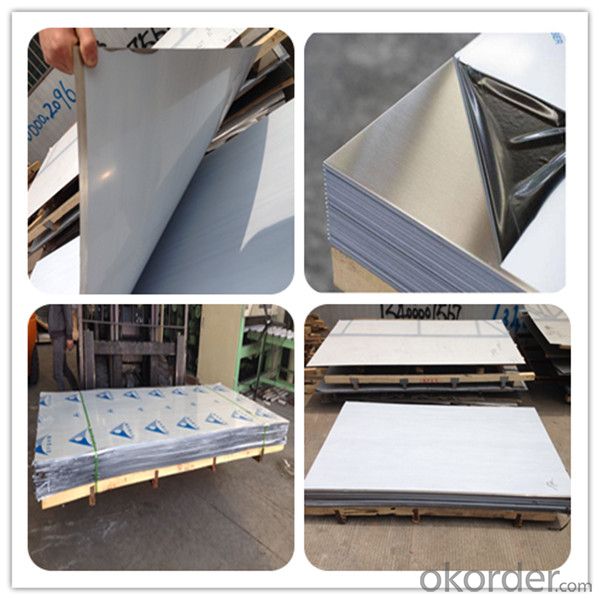
Packaging & Shipping
1, Packaging: seaworthy package or as required
2, Delivery: 35-45 days or based on quantity
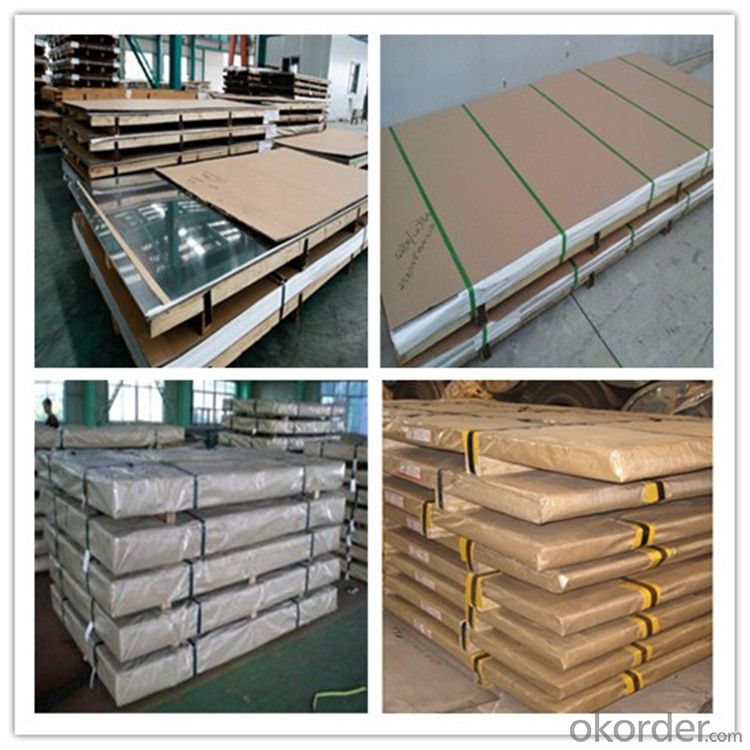

After-sale service:
CNBM provides the services and support you need for every step of our cooperation.
We’re the business partners you can trust; you can relax and get on with doing business.
For any problem, please kindly contact us at any your convenient time,
we’ll reply you in our first priority within 24 hours
Application

F A Q
1, Your advantages?
professional products inquiry, products knowledge train (for agents), smooth goods delivery, excellent customer solution proposale
2, Test & Certificate?
SGS test is available, customer inspection before shipping is welcome, third party inspection is no problem
3, Factory or Trading Company?
CNBM is a trading company but we have so many protocol factories and CNBM works as a trading department of these factories. Also CNBM is the holding company of many factories.
4, Payment Terms?
30% TT as deposit and 70% before delivery.
Irrevocable L/C at sight.
- Q: Are stainless steel sheets suitable for welding or fabrication?
- Yes, stainless steel sheets are suitable for welding and fabrication. Stainless steel has excellent weldability, which means it can be easily fused together using various welding techniques such as TIG (Tungsten Inert Gas) or MIG (Metal Inert Gas) welding. It also has good formability, allowing it to be easily shaped and fabricated into different structures or components. Additionally, stainless steel sheets offer high strength and corrosion resistance, making them a popular choice in industries such as construction, automotive, and manufacturing. Overall, stainless steel sheets are a versatile and reliable material for welding and fabrication applications.
- Q: Are stainless steel sheets corrosion-resistant?
- Indeed, corrosion is not a concern when it comes to stainless steel sheets. This type of steel is engineered to resist corrosion and staining, making it exceptionally well-suited for a wide range of uses. The presence of abundant chromium in stainless steel prompts the formation of a protective layer on its surface, effectively warding off the development of rust and corrosion. Consequently, stainless steel sheets are highly suitable for deployment in environments prone to moisture, chemicals, or other corrosive agents. Moreover, their ability to endure high temperatures and exhibit remarkable durability further bolsters their resistance to corrosion.
- Q: Can stainless steel sheets be used in architectural applications?
- Yes, stainless steel sheets can be used in architectural applications. Stainless steel is a versatile material that offers durability, corrosion resistance, and aesthetic appeal, making it suitable for various architectural purposes such as cladding, roofing, decorative elements, and structural components. Its sleek, modern look and ability to withstand harsh environmental conditions make stainless steel sheets a popular choice in the construction industry.
- Q: What are the benefits of using mirror-finish stainless steel sheets?
- Mirror-finish stainless steel sheets offer numerous advantages in various applications. Firstly, their mirror-like surface adds elegance and style to any space, whether it be in interior design, architecture, or decorative pieces. The reflective nature of the mirror finish enhances the overall aesthetic appeal. Furthermore, these sheets are exceptionally durable and long-lasting. The high-quality stainless steel material used in their production ensures resistance to corrosion, rust, and staining, making them suitable for both indoor and outdoor use. This quality also makes them easy to clean and maintain, saving time and effort in upkeep. In addition, mirror-finish stainless steel sheets have the ability to reflect light, making them ideal for spaces that require enhanced lighting or where light distribution is important. The reflective surface helps brighten up the environment, making it perfect for areas such as kitchens, bathrooms, and commercial spaces. Moreover, these sheets are highly versatile and can be used in a wide range of applications. From kitchen countertops and backsplashes to wall claddings, elevator interiors, and even custom-made furniture, their versatility allows for creative and unique designs in various industries. Furthermore, mirror-finish stainless steel sheets have excellent heat resistance properties, making them suitable for applications involving high temperatures. This feature makes them a popular choice in commercial kitchens, industrial settings, and other environments where heat exposure is a concern. Lastly, mirror-finish stainless steel sheets are an environmentally friendly option. Stainless steel is highly recyclable, and using mirror-finish sheets promotes sustainability by reducing the need for new materials. This aligns with the growing emphasis on eco-friendly practices and the desire to reduce the carbon footprint. In conclusion, the advantages of mirror-finish stainless steel sheets include their elegant appearance, durability, light reflection capabilities, versatility, heat resistance, and eco-friendliness. These qualities make them a desirable choice for various applications, providing both aesthetic appeal and functional advantages.
- Q: What is called anti fingerprint stainless steel sheet?
- Anti fingerprint (also known as non fingerprint) stainless steel plate is a protective layer treatment process is extremely thin and solid formed on the surface of stainless steel by nano coating technology, the stainless steel surface can not only achieve the anti fingerprint effect, but also can improve the ability of anti corrosion; and processing, such as bending or stamping processing can meet the general request.
- Q: Can stainless steel sheets be used for decorative ceiling tiles?
- Yes, stainless steel sheets can indeed be used for decorative ceiling tiles. Stainless steel is a versatile material that offers a modern and sleek appearance, making it a popular choice for decorative purposes. Its durability, resistance to corrosion, and ability to withstand high temperatures also make it suitable for ceiling applications. Additionally, stainless steel sheets can be easily customized with various finishes, patterns, and designs to create unique and visually appealing ceiling tiles.
- Q: How do you prevent staining or discoloration on stainless steel sheets in coastal environments?
- To prevent staining or discoloration on stainless steel sheets in coastal environments, it is essential to regularly clean and maintain the surface. This can be done by using mild detergents or stainless steel cleaners to remove any salt, dirt, or other contaminants. Additionally, applying a protective coating or a high-quality wax can help to create a barrier against the corrosive effects of salty air and moisture. Regular inspections and prompt removal of any signs of corrosion or staining are also vital to prevent further damage.
- Q: Are stainless steel sheets suitable for architectural handrails or guardrails?
- Yes, stainless steel sheets are highly suitable for architectural handrails or guardrails. Stainless steel is a popular choice for these applications due to its excellent strength, durability, and corrosion resistance properties. It is able to withstand various weather conditions and is resistant to rust, making it ideal for outdoor installations. Stainless steel sheets can be easily customized and fabricated into different shapes and sizes, allowing for flexibility in design. Additionally, stainless steel has an aesthetic appeal that complements modern architectural designs. It is a low-maintenance material that requires minimal upkeep, making it a cost-effective choice in the long run. Overall, stainless steel sheets are a reliable and versatile option for architectural handrails or guardrails.
- Q: Is stainless steel plate permitted to contact galvanized material?
- If your products are not immersed in the electrolyte (not put in wet or condensed water place), just hope galvanized plate itself does not corrode, consider using stainless steel screws, but doing so will occur between stainless steel bolts and steel carburizing, stainless steel bolt rust damage lost the meaning of stainless steel bolt. The reason why stainless steel is corroded at this time is called intergranular corrosion".
- Q: Can stainless steel sheets be used for escalator steps?
- Yes, stainless steel sheets can be used for escalator steps. Stainless steel is a popular choice for escalator steps due to its durability, strength, and resistance to corrosion. It can withstand the constant foot traffic, heavy loads, and the wear and tear that escalator steps are subjected to on a daily basis. Additionally, stainless steel has a sleek and modern appearance, which adds to the overall aesthetic appeal of escalators. This makes stainless steel sheets a reliable and practical choice for escalator steps in various commercial and public settings.
Send your message to us
304 Stainless Steel Plate in Wuxi, China
- Loading Port:
- Shanghai
- Payment Terms:
- TT OR LC
- Min Order Qty:
- 4.5
- Supply Capability:
- 3000 m.t/month
OKorder Service Pledge
OKorder Financial Service
Similar products
Hot products
Hot Searches
Related keywords
